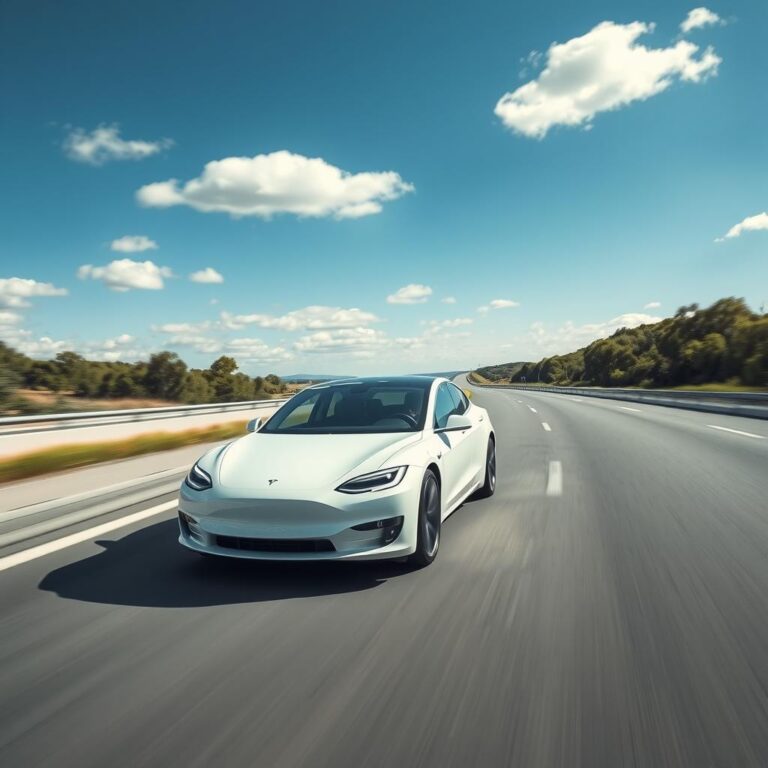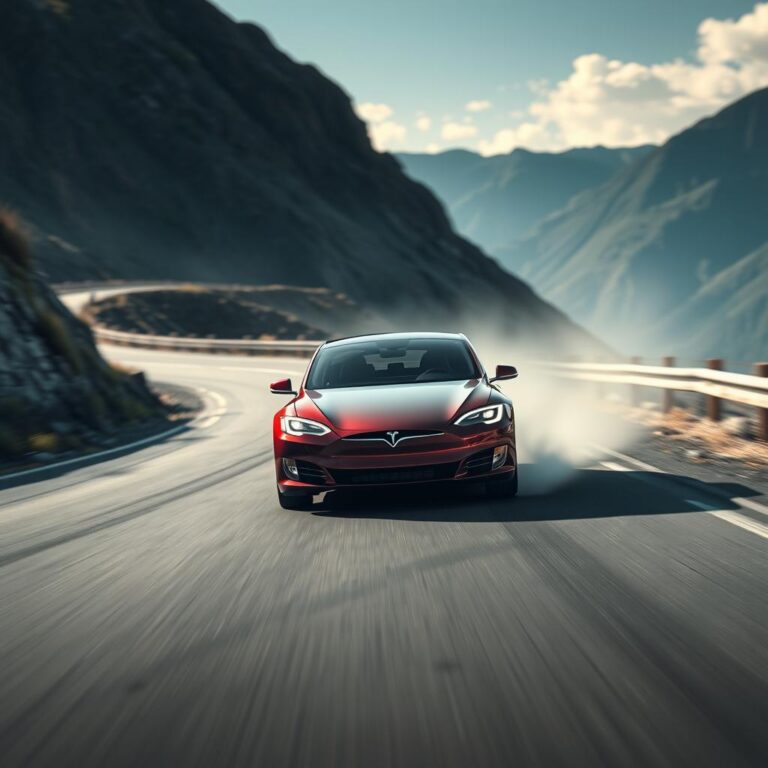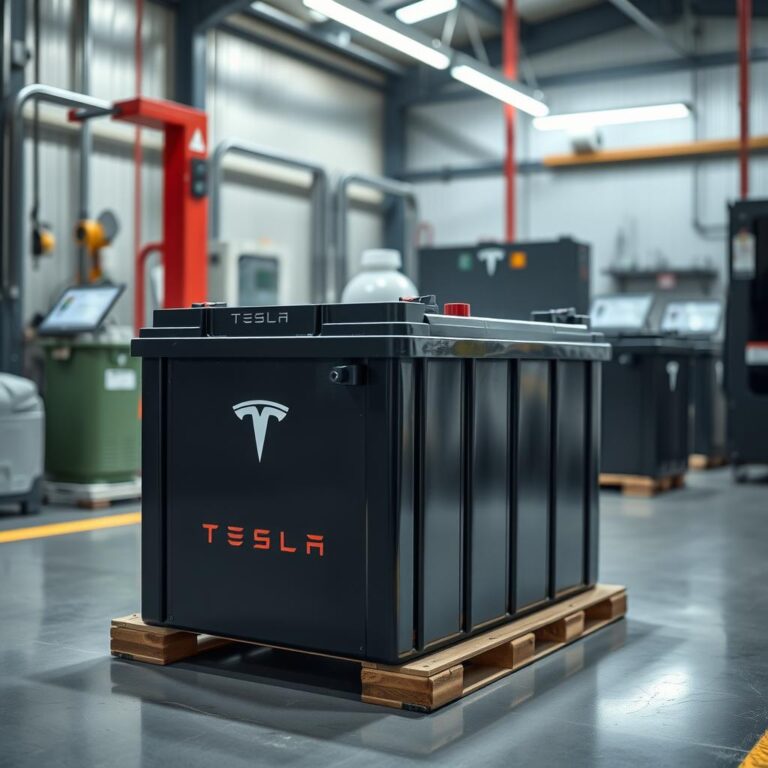Are Tesla Cars Self Driving?
Are Tesla Cars Self-Driving? Let’s Explore the Reality
The concept of self-driving cars is one that’s fascinated many for years, and Tesla has been at the forefront of this technology. With its advanced driver-assistance systems (ADAS) like Autopilot and Full Self-Driving (FSD), Tesla cars are often at the center of conversations about autonomous vehicles. But the question remains: Are Tesla cars self-driving? The short answer is: not yet, but they’re moving in that direction. Let’s break down the current capabilities and limitations of Tesla’s self-driving technology.
Understanding Tesla’s Autopilot and Full Self-Driving (FSD) Capabilities
Tesla’s self-driving features are powered by two main systems: Autopilot and Full Self-Driving (FSD). While these systems can automate many driving tasks, they do not make a Tesla fully autonomous. Let’s dive deeper into each of these features.
Autopilot: Advanced Driver Assistance
Autopilot is Tesla’s basic level of driver-assistance system. It can control the car’s steering, speed, and braking in certain situations. Tesla describes Autopilot as an advanced driver assistance system (ADAS), meaning it is designed to assist, not replace, the driver.
With Autopilot, the car can steer within its lane, adjust speed based on traffic, and assist with emergency braking. However, it still requires the driver to remain alert and have their hands on the wheel. While it offers impressive convenience, Autopilot is not a fully self-driving system, and the driver is always responsible for maintaining control of the vehicle.
Full Self-Driving (FSD): The Next Step Towards Autonomy
Full Self-Driving (FSD) is an optional upgrade to Autopilot, offering more advanced features. FSD includes everything that Autopilot does, plus additional capabilities like automatic lane changes, Navigate on Autopilot (which helps the car navigate highway exits), and Autopark (automatic parallel parking). FSD can also handle traffic lights and stop signs in some conditions, allowing the car to drive more autonomously in city streets.
However, despite the name, Full Self-Driving is not truly full autonomy yet. Tesla’s FSD requires constant monitoring by the driver, and the system is still considered in beta. Tesla’s FSD is continually updated via over-the-air software updates, but it has not yet reached the level of fully autonomous driving.
What Level of Autonomy Are Tesla Cars?
To understand Tesla’s position in the self-driving world, it’s helpful to look at the industry’s standards for autonomous vehicles. The Society of Automotive Engineers (SAE) has developed a scale for autonomous driving, which ranges from Level 0 (no automation) to Level 5 (full autonomy). So, where do Tesla cars stand?
Level 2: Conditional Automation
Currently, Tesla’s Autopilot and Full Self-Driving capabilities are considered Level 2 automation, or conditional automation. This means the car can perform some driving tasks, like steering, acceleration, and braking, but it still requires the driver to be actively involved and ready to take over at any moment.
At this level, the vehicle can drive itself in certain conditions, such as highway driving, but it cannot handle complex environments like urban streets or parking lots without human intervention. While Tesla’s systems are incredibly advanced, they still rely on the driver to monitor and control the vehicle.
What Would Level 5 Autonomy Look Like?
Level 5 autonomy, the holy grail of self-driving technology, would mean a car that could drive itself anywhere, under any conditions, without any human input. At this level, there would be no need for a steering wheel or pedals, as the car would be fully capable of handling all driving tasks, including complex decision-making in unpredictable environments like city driving or adverse weather conditions.
While Tesla has made significant progress towards self-driving technology, it’s still a long way from achieving Level 5 autonomy. Tesla’s goal is to continue improving its FSD system, but true Level 5 autonomy remains a challenge that the entire automotive industry is still working toward.
Is Tesla’s Full Self-Driving Technology Safe?
As Tesla moves closer to full autonomy, safety is a major concern for many drivers. Tesla’s Autopilot and FSD systems have been involved in some high-profile incidents, raising questions about their reliability and safety. However, Tesla maintains that its systems are safe when used properly and that they reduce accident rates compared to human drivers.
Accident Rates with Tesla Autopilot
According to Tesla, vehicles equipped with Autopilot have fewer accidents per mile compared to vehicles without it. Tesla’s own data shows that in 2020, there was one accident for every 4.19 million miles driven with Autopilot engaged, compared to one accident for every 1.6 million miles driven in vehicles without Autopilot.
That said, the system is not perfect, and there have been incidents involving Autopilot. Critics argue that Tesla’s marketing of Autopilot as “self-driving” might lead some drivers to over-rely on the system and not stay fully engaged while driving. Tesla emphasizes that drivers must remain attentive and ready to take control at any time, even when Autopilot is active.
The Future of Self-Driving Teslas
While Tesla’s vehicles are not fully self-driving today, the company is constantly improving its technology. Tesla’s Full Self-Driving (FSD) software is in continuous development, with regular updates being rolled out to improve performance and add new features. As Tesla collects more data from its fleet of cars, the system is expected to become smarter and more capable.
Challenges to Full Autonomy
Despite the progress Tesla has made, there are several challenges to achieving full autonomy. These include technical hurdles like improving the car’s ability to handle complex traffic situations, legal and regulatory issues, and ensuring that the technology is safe and reliable under all driving conditions. Tesla’s CEO, Elon Musk, has expressed confidence that full self-driving will be a reality in the near future, but achieving Level 5 autonomy is still a significant challenge.
Conclusion: Are Tesla Cars Self-Driving?
So, are Tesla cars self-driving? While Tesla’s cars are not yet fully autonomous, the company has made significant strides in the development of self-driving technology. Tesla’s Autopilot and Full Self-Driving (FSD) systems offer impressive driver assistance features, but they still require the driver’s full attention and cannot handle all driving tasks without human intervention.
As Tesla continues to refine its technology, the dream of fully self-driving cars is getting closer, but for now, Tesla vehicles remain at Level 2 autonomy, with drivers responsible for maintaining control. The future of self-driving cars is promising, and Tesla is certainly at the forefront of this technology—but we’re not there just yet.

The Road to Full Autonomy: What’s Next for Tesla’s Self-Driving Capabilities?
When Will Tesla Achieve Full Self-Driving?
While Tesla’s cars are making impressive strides with Autopilot and Full Self-Driving (FSD) technology, the timeline for achieving true full autonomy (Level 5) is still uncertain. Tesla’s CEO, Elon Musk, has frequently said that he expects the company to achieve Level 5 autonomy within a few years, but there are several hurdles that must be overcome to get there.
Technological Hurdles to Full Autonomy
One of the biggest challenges to achieving full self-driving capability is the technology itself. While Tesla’s cars are already equipped with an array of sensors and cameras to help with navigation, these systems still rely heavily on human oversight. Achieving Level 5 autonomy will require a more sophisticated understanding of complex driving environments, including dealing with inclement weather, unpredictable human drivers, and ambiguous road conditions.
Improving machine learning and artificial intelligence (AI) systems to make decisions in real-time in these unpredictable environments is a massive undertaking. Tesla continues to improve its AI through real-world data collected from its fleet of vehicles, but achieving a fully self-driving car that can handle all situations without any human intervention is still a work in progress.
Legal and Regulatory Challenges
In addition to technological challenges, there are also legal and regulatory hurdles that must be addressed before Tesla can achieve full autonomy. In many countries, regulations governing autonomous vehicles are still being developed. Tesla needs to work with government agencies and regulators to ensure that its vehicles meet safety standards and comply with laws related to self-driving cars.
As of now, Tesla’s Autopilot and FSD features are still classified as driver assistance systems, and they cannot be marketed as fully autonomous under current legal frameworks. Regulations will need to evolve to accommodate the increasing capabilities of self-driving technology, and this will take time.
The Role of Tesla’s Data and Software Updates
One of Tesla’s greatest advantages in the race to full autonomy is its massive fleet of vehicles on the road. Every Tesla car that is on the road today is collecting real-time data about driving conditions, traffic patterns, and other road scenarios. This data is invaluable for improving Tesla’s self-driving technology and allowing the company to refine its systems more quickly than traditional automakers.
Data Collection and Machine Learning
Tesla uses the data collected from its vehicles to continuously improve its machine learning algorithms. The more miles Tesla cars drive with Autopilot and FSD enabled, the better the system gets at handling real-world scenarios. Tesla cars can learn from each other’s experiences, speeding up the development of more accurate and reliable self-driving capabilities.
By pushing software updates regularly, Tesla improves its systems over time, allowing drivers to experience incremental improvements in the car’s performance. As a result, Tesla cars are constantly becoming smarter and more capable, taking the company one step closer to full self-driving capability.
Challenges of Scaling Autonomy to All Roads
Even as Tesla’s self-driving technology continues to improve, scaling it to handle all types of roads, conditions, and driving environments presents a major challenge. Tesla’s vehicles perform exceptionally well on highways, where the driving conditions are more predictable. However, when it comes to urban streets with complex intersections, pedestrians, cyclists, and unpredictable driving behaviors, the system still faces limitations.
For Tesla to achieve true full autonomy, its vehicles will need to handle these complex urban environments with the same level of competence as they do on highways. This requires improvements in the system’s ability to make real-time decisions based on limited or ambiguous information. It’s a difficult challenge that will require both technological innovation and rigorous testing to ensure safety.
How Safe is Tesla’s Self-Driving Technology?
As Tesla advances towards full autonomy, one of the primary concerns from the public and regulators is safety. Tesla’s Autopilot and FSD features have proven to be relatively safe when used properly, but there have been high-profile incidents involving the system, raising questions about its reliability and safety.
Tesla’s Safety Record with Autopilot
Tesla has released data showing that vehicles with Autopilot engaged have fewer accidents per mile compared to vehicles without the system. According to Tesla’s 2020 safety report, cars equipped with Autopilot experienced one accident for every 4.19 million miles driven, compared to one accident for every 1.6 million miles in non-Autopilot vehicles.
However, there have been incidents where Tesla’s Autopilot system was involved in accidents, some of which resulted in fatalities. These incidents have led to calls for greater transparency and more stringent oversight of Tesla’s self-driving technology. It’s important to note that Tesla continues to work on improving the system, but the current state of technology still requires the driver to remain vigilant and ready to take control at any moment.
How Tesla Is Addressing Safety Concerns
To address safety concerns, Tesla has continually updated its Autopilot and FSD features to improve performance, reduce errors, and enhance safety. Tesla has also reinforced the message that drivers must remain attentive at all times and be prepared to intervene if necessary. Tesla includes several warning systems and monitoring features to ensure that the driver is paying attention while using Autopilot.
The Future of Tesla’s Self-Driving Technology
The future of Tesla’s self-driving technology looks promising, but it will take time before we reach fully autonomous cars. Tesla’s vision of self-driving cars continues to evolve, with new software updates, machine learning, and real-world data helping to shape the future of autonomous vehicles.
While Level 5 autonomy (full self-driving in all conditions without human intervention) is not yet a reality, Tesla is making rapid progress in this direction. With continuous improvements, the use of real-time data, and ongoing software updates, Tesla’s self-driving technology is sure to improve and eventually redefine the way we think about driving.
Conclusion: Are Tesla Cars Self-Driving?
In conclusion, Tesla cars are not fully self-driving at this point. Tesla’s Autopilot and Full Self-Driving features are impressive, but they still require human oversight. The technology is evolving, and Tesla is making rapid progress toward full autonomy, but we’re still some years away from fully autonomous driving (Level 5). For now, Tesla’s self-driving systems offer significant convenience and safety benefits, but drivers must remain alert and ready to take control at all times.
With advancements in AI, machine learning, and real-world data, Tesla is pushing the boundaries of self-driving technology. As the company continues to improve its systems, the dream of fully autonomous vehicles is gradually becoming more achievable. Until then, Tesla’s cars offer some of the best advanced driver-assistance features available today.



